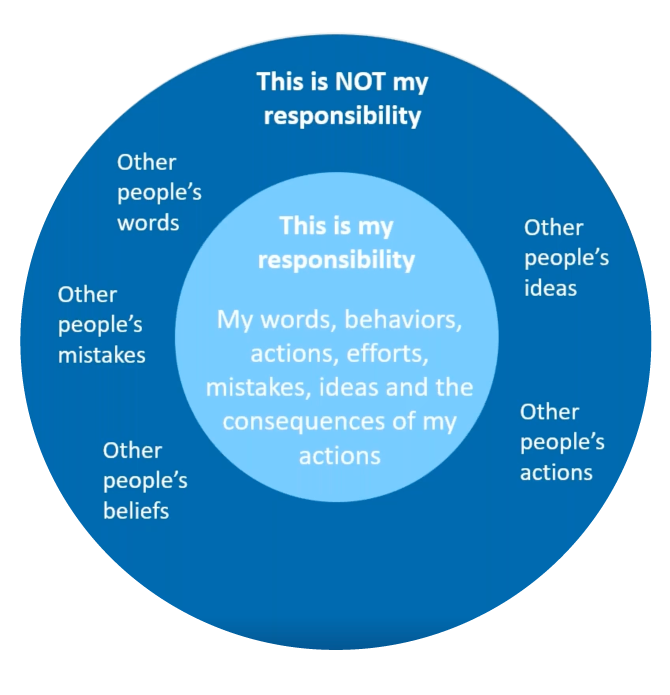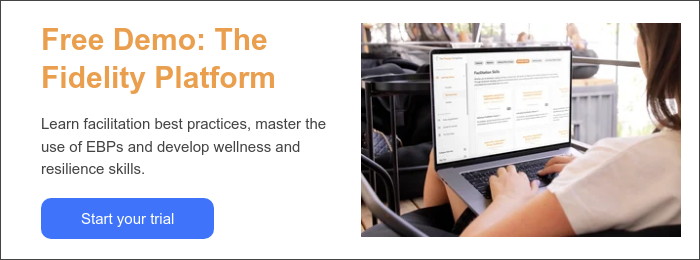How to manage stress and reduce burnout as a behavioral health professional

Jump to key sections:
Key Terms | Strategies for Increasing Resilience | Download Recording & Handout
Resilience is key to managing stress and reducing burnout for behavioral health professionals. Building resilience in your professional life can help you see the value in your work, create and maintain progress and foster contentment. In a recent webinar with The Change Companies, Robert Kehoe, an expert in the behavior change field, shared his favorite evidence-based strategies for boosting your resilience.

Key terms to keep in mind:
|
Resilience: Successfully adapting to difficult or challenging life experiences |
|
Languishing: The absence of good mental health |
|
Burnout: Emotional exhaustion, depersonalization and reduced personal accomplishment |
Strategies for Increasing Resilience:
Understand “life happens.”
Life happens — both the good and the bad — but we often focus on the bad. Try asking yourself, “Is this a bad thing?” and “What is the objective reality?” Taking a closer look at what you’re telling yourself can help you avoid getting stuck in the negative.
Look at what you can control.
Focus on what is in your sphere of control (your attitudes, behaviors, efforts, ideas, responses, reactions, etc.) and let go of what is not in your control (other people’s attitudes and behaviors, weather, pandemics, etc.) Be cognizant of trying to take responsibility for what you cannot control, or avoiding responsibility for what you can.

Consider what you can handle.
Take an honest and objective look at the events or changes you’re experiencing. Trying putting an event, setback or challenge on a scale of 1-100. Quantifying where this obstacle lies on a scale of “no big deal” to “worst case scenario” can help put events into perspective. You might also try out the statement, “I would prefer X did not happen, and I can handle it.” Neither of these strategies mean you have to take an outlook of toxic positivity. Rather, they can encourage a realistic outlook on the day-to-day events that are bound to pop up.
Evaluate needs vs. wants.
Reducing demands is often the first step to reducing burnout. What demands does your job put on you? What physical, social and professional demands are you putting on yourself? Take a look at what’s in your sphere of control. Can you reduce what you need to be resilient to?
Use your resilience to try something different!
Try something different related to your work. You may be surprised by how your outlook can change when you’re able to get unstuck. Try collateral duty, cross-training or co-facilitating. You can also try something different / unrelated to your work. The goal is to find success, meaning and purpose through what is important to you. Find a new way to challenge yourself that is consistent with your values.
Resilience is a skill you can get better at — not an inherent trait. You already exercise resilience, so include those current skills when you begin to practice the strategies above, and don’t be afraid to start small with one strategy at a time.
At The Change Companies, we’re here to help. We offer a full range of evidence-based products, including Interactive Journals®, Facilitator Guides, trainings and digital curricula, all specifically designed to alleviate your workload as a provider as much as possible. We're in this together, walking with you alongside your clients on their journey to a better tomorrow.
Download the Webinar Recording and Handout:
To download the full webinar, Q-and-A session and accompanying handout on staff resilience visit https://go.changecompanies.net/staff-resilience-webinar. For first access to our free webinars in the future, follow us on our social media channels—Facebook, LinkedIn and Twitter.

